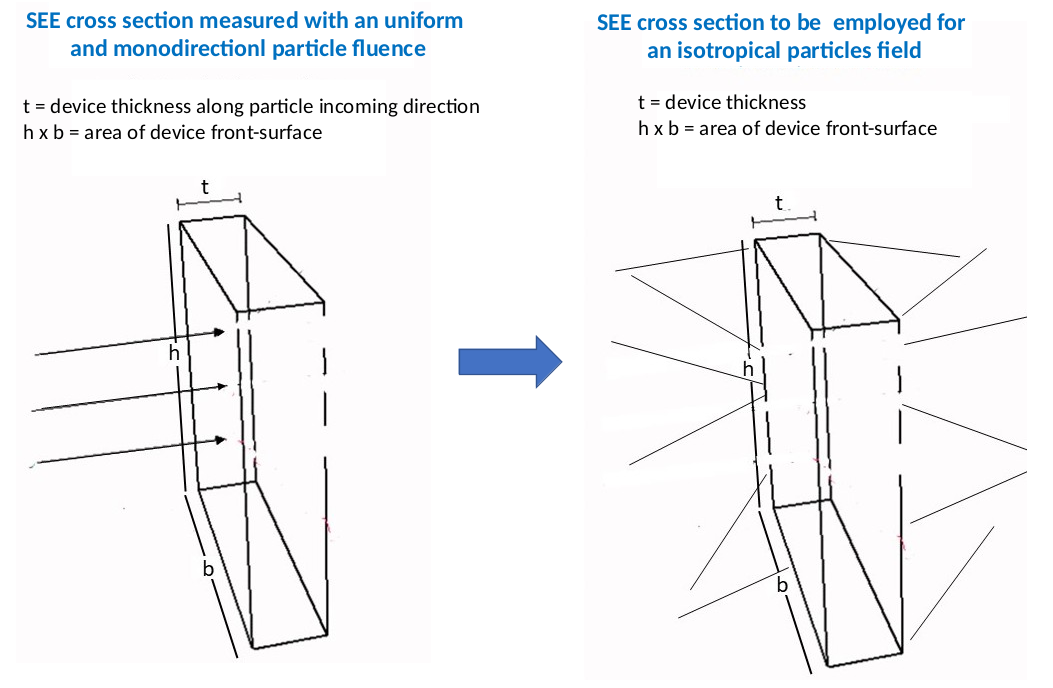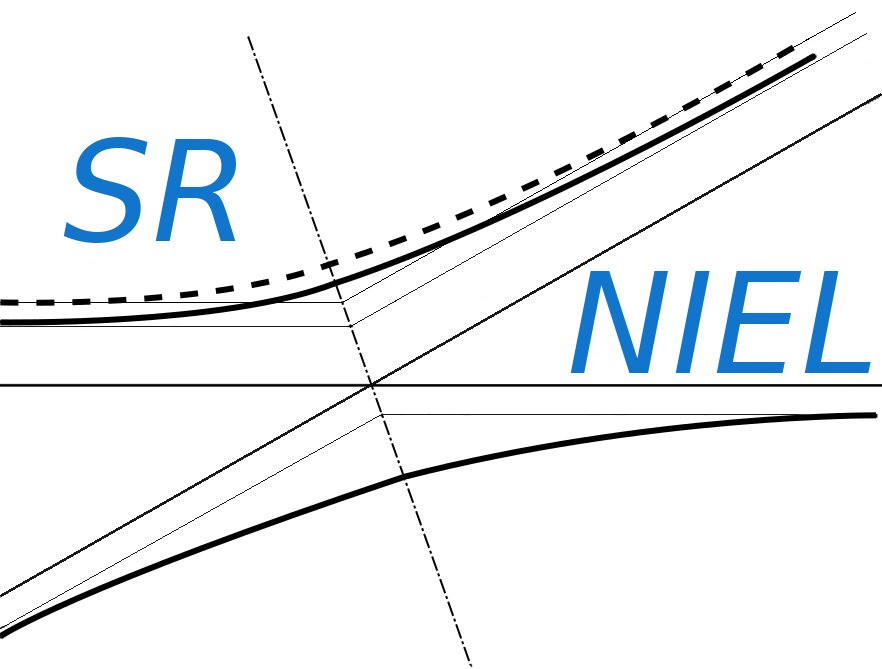The occurrence probability of events due to large energy depositions in a device - like those commonly referred to as single event effects (SEE) - is usually expressed by means of the cross section as a function of mass electronic stopping power - or mass restricted energy loss - of the device material (e.g., see Sects. 11.4-11.4.9 of [Leroy and Rancoita (2016)] and references therein). SEE cross section are usually determined exposing a device to uniforn and monodirectional particle fluences as a function of particle stopping power (e.g., LET). However, in space missions devices are exposed to isotropically distributed particles, which vary their paths inside a device and, as a consequence, their resulting mean deposited energies (thus the effective device cross Section) as a function of the stopping power.




